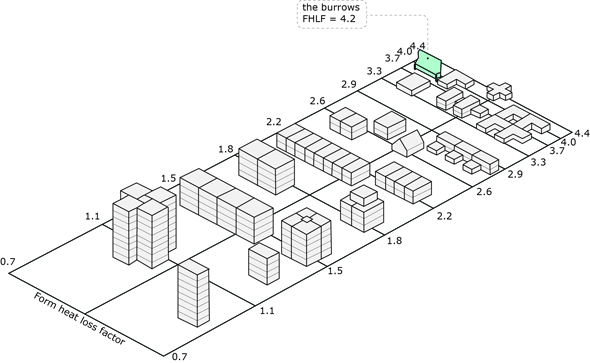We have recently been looking at the development of a design for an eco-home. The project has already achieved planning on a difficult site but the original architect has been unable to continue with the project, so we have been asked to take over. Our first discussions with the client revolved around what the design ethos was, what they really meant by eco-home etc. They, ultimately, wanted a comfortable home that was cheap to heat. We discussed the Passivhaus standard at length and they were very keen.
Now that we’ve developed an initial DesignPH (the Sketchup plugin for Passivhaus design) model for the building it’s clear that achieving Passivhaus is unrealistic and would become financially burdensome. The building is single storey and the geometry is quite complex making for a poor heat loss form factor of 4.54 (so poor, it drops off the bottom of the typical form heat loss diagram). It’s even worse than the Burrows, which was always difficult, but it doesn’t have the benefit of the earth sheltering.
Further to this, the architect and client wanted solar panels on the roof so a section of roof that pops up to give clearstorey lighting to the centre of the plan tilts towards the south to make this as good as possible for solar panels, whilst forcing all the clearstorey glazing onto the northern faces of this pop up, furthering the poor heat loss situation. In fact, there’s nearly as much north facing glazing as there is south.
This has meant, even with very low U-values and exceptional window performance, we’re struggling to bring the project in any better than 24 kWh/m2.a which is some way off the 15 that Passivhaus demands. It will still be a fantastically well performing building that will be comfortable, draft free with low running costs. It will also generate a good chunk of its own electricity. The conflicts, though, that have been introduced by not following a rigorous methodology has meant the house has fallen short of its potential and has, in places, prioritised energy production over reducing use in the first instance.
Perhaps this is a project we need to investigate the new PHI Low Energy standard for? Anyway, a very interesting project; watch this space.

